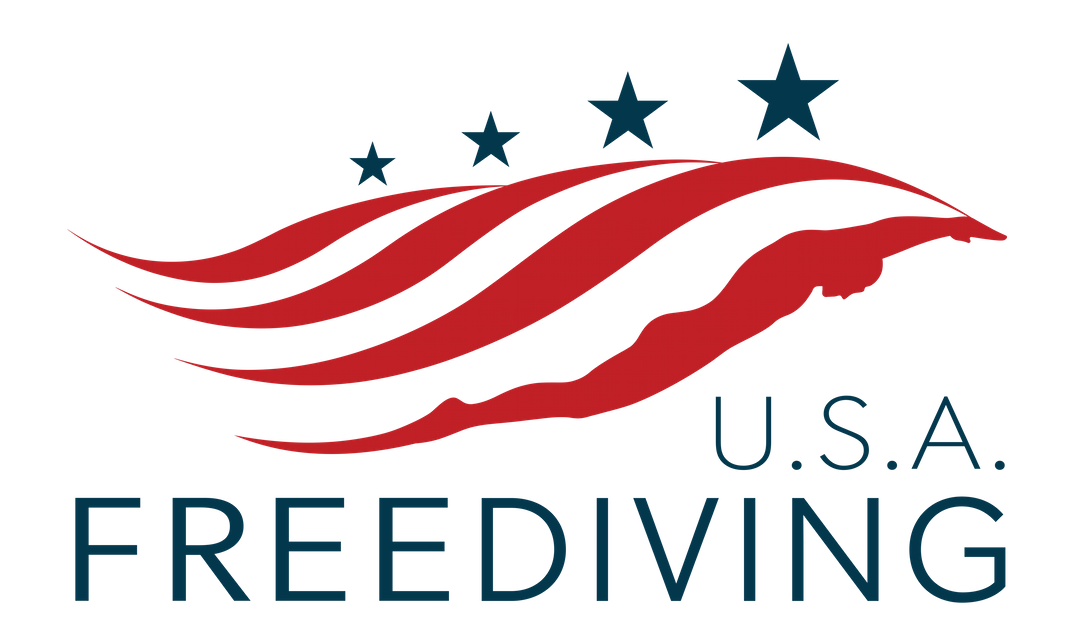03 Jul A Book About My Static PB in Belgrade by John Hullverson
At it again, John Hullverson describes his static session ending in a new PB at this year’s Pool World Champs in Belgrade. Verbose, yes. Entertaining, always!
Hi guys, here’s another update from Belgrade and the A.I.D.A.World Pool Championships.
There’s a nice vibe of friendliness and helpfulness here at the competition among the athletes, and although it doesn’t quite reach Deja Blue’s Kiss-the-Competitor-Before-Their-Dive level, it’s still pretty nice.

The author with (from bottom) Shell Eisenberg and Kerry Hollowell. Photo bomb by Kirk Krack and Carolina Schrappe.
Tuesday was the STA (static apnea) competition and since I’m solo here and since Carla Hanson was judging, I asked fellow athlete Chris Marshall from New Zealand to coach me. Chris is pretty young but has been competing for a decade and been to 6 World Championships, so he knows what he’s doing. There’s a nice vibe of friendliness and helpfulness here at the competition among the athletes, and although it doesn’t quite reach Deja Blue’s Kiss-the-Competitor-Before-Their-Dive level, it’s still pretty nice. Most countries bring 5-8 athletes and are all decked out in their matching sweats and hang out and dine with each other, but there’s still a lot of intermingling and camaraderie amongst everyone.
Anyway, I declared 2:30 hoping to be scheduled somewhere in the middle heats so as not to go too early in the morning when the pool would be colder and the sun wouldn’t be as high. That worked out and my OT time was 9:45 a.m. As usual, I didn’t have any breakfast and headed to the pool in the athlete shuttle. On the way there I started focusing on my warm up plan and even did a 1 minute FRC static and a 2 minute FRC static in the bus on the way there just to get the body in static mode.I got to the pool about an hour and 15 minutes before my OT, so I just laid down and tried to relax and listened to my female sensuality tape which reminds me that I am comfortable when someone I care about touches my body (if you don’t know what I’m referring to right now, please disregard and pretend you didn’t read that). About 50 minutes before OT I did three negative diaphragm stretches (each one is a 3rd level exhale, three reverse packs, and then lift the diaphragm for three seconds, release, then repeat three times and then breathe). Again, just getting the body warmed up for what’s to come and getting the diving reflex awakened.
At 45 minutes before OT, I got into my shiny, new Team USA Oceaner 3 mil and got in the pool, which was now 24 C/75 F, which is perfect for static, in my opinion.
In case anyone is interested, here’s my static in-water warm up routine:
- 6 minute facial immersion
- 1 minute breathe up for 1 minute FRC static
- 1 minute recovery
- 2 minute breathe up for 2 minute FRC static (I purge for the last minute breathe up)
- 1 minute recovery
- 3 minute breathe up for 3 minute static (I purge for the last minute breathe up)
- 1 minute recovery
- 4 minute breathe up for 4 minute static (I purge for the last 1.5 minutes breathe up)
That routine only takes 29 minutes and it’s got a few 1 minute recoveries built in which I can skip if I’m short on time for any reason. It usually gets my dive reflex kicked in pretty good and because it progresses so conservatively, it’s usually very easy to do. When I finish it, I know I’ve only got one more static to do—the official one. And because the warm up only takes about a half hour, I usually still have about 10 minutes to get into the comp zone and get ready for the final countdown.
With 15 minutes before OT, I was a little behind schedule and had just finished the 3 minute static. I was wondering whether I should just relax and skip the last 4 minute breath hold, so I asked Chris what he thought. He suggested I go ahead and do it, as I’d still have 7 minutes left before OT. That was the right call, for sure, because I don’t like the gap to be too big between the length of my last warm up static and the length of my intended comp static. If the gap’s too big I think it’s easier for the negative thought monkeys to creep in and mess with your brain. It’s sort of a primal “fear of the unknown” and if you’ve already done a 4 minute static in warm up that day, then the only “unknown” in your comp static is the minute or two you do beyond 4.
Anyway, with 2 minutes to OT, I started my purge breathing. If I ever get any tingling in my hands or feet, I know to back off the purging for a couple seconds, a lesson I learned when Shell made out with me while I was unconscious in the kiddie pee pool in Monterey (again, if you don’t know what I’m referring to right now, please disregard and pretend you didn’t read that).
When OT came, I got a nice peak inhalation and did 13 packs to offset the fact that I was standing upright, but submerged, in the water and wearing a wearing a 3 mil wetsuit. (I had worked out that number during warmups, as I never want to overpack, both for safety and comfort reasons). I settled into my static happy that 13 was the right number and I felt like I had full lungs but was still comfortable.Everybody has a different preference and routine for getting through a static. My personal favorite to watch and listen to is Meghan Gilmore’s coaching of her dad Tom, which makes me and apparently every person and thing in the cosmic universe “so happy”). Meghan wasn’t here though, so I had to rely on my own routine. I usually try to break it down into minutes:
The first minute I spend just getting comfortable with full lungs and settling into my relaxation. BTW, I do warm ups and the comp static with just a nose clip and no goggles or mask so I get the full benefit of facial immersion.
The second minute I usually spend doing a very slow, head-to-low-back body scan reminding myself to relax. I know from dry land statics with a pulse oximeter, that if I simply repeat the word “re—lax” to myself, very slowly, over and over, my heart rate drops significantly, usually from the mid 50s to the high 40s, so I spend the second minute doing this and waiting for my first 2 minute signal.
The third minute I just try to take a nap.
The fourth minute (or sometime after 3:30) is usually when I get my first contraction, which is usually very mild (Sorry Humberto). This is where the real static begins, as Kirk says, and I don’t really have a set routine for this time period, other than working signal to signal if I’m having a tough time. Each static is different, though, and this time I felt pretty good.
I had decided before hand that when I needed to kill a couple minutes, I would visualize myself doing a long, slow pull down at the Deep Joy Y-40 pool in Italy, which I visited before Serbia. The water there is 32C/92F and it makes the diving extremely easy. My first day there I did an easy 4:10 pulldown to 20M, so I was just going to mentally re-do this dive during my static to kill as much time as possible. I think I started that at about 4 minutes into my static and it worked like a charm.
The fifth minute I was still visualizing myself hanging onto the line on that long, slow pulldown until about 5:30 when I started having regular contractions (every 7-10 seconds maybe?) and was working from each 15 second signal to the next. The good news was that my hypoxia made things tolerable and I could still hear and, more importantly, understand my coach who was telling me I still looked good.The sixth minute was upon me before I knew it and I was just trying to balance hypoxic euphoria with knowing when to come up. Before the dive I had told my coach that my PB clean was 6:09 and PB with a SP Red Card was 6:19, so he should bring me up no later than 6:15.
“MUST…BEAT…JESSEA…LU…MUST…BEAT…JESSEA…LU”
At 6:00 I brought my legs down underneath me and had my hands up on the side and I gave a very strong signal so he let me cotinue. At 6:15 I still felt pretty good, consciously knowing I had done a good static and now just trying to squeeze a little more out of it. At 6:20 I knew I should surface, but only one thought kept my head down: “MUST…BEAT…JESSEA…LU…MUST…BEAT…JESSEA…LU”. (6x Chinese NR record holder and PFI Instructor Jessea Lu knocked out a clean 6:28 at Deja Blue 6 in May).And then it was done. I came up at 6:31, yanked off my nose clip, took a couple quick breaths and signaled OK. My coach was telling me to “say it—say it” so I just said “I’m OK” and there it was. White card, baby!
6:31 was 17th out of 50 competitors and one slot out of the finals, by three seconds. Back at the hotel, one of the other athletes informed me that one of the top 16 actually should have been DQ’d but the judges missed the violation, and if I wanted to file a protest, video would catch it and I would be in the finals. I appreciated being informed, but we both quickly agreed that in life and in sport, you can’t elevate yourself by bringing someone else down, so there would be no protest and during the finals on Saturday I’ll be standing poolside, probably in the squirrel mask, happy that I got to party the night before!
Oh, by the way, lest anyone think 6:31 is a big deal, yesterday the last competitor, Aleix Segura Vendrell from Spain, knocked out a cool 10:07 static, which i am told is the longest static ever in a competition! And this was the prelims!!! Can’t wait to see what he does in the final. At 9:00 his coach was telling him he could come up any time and he was waving with his hands up on the wall as if to say “what are you talking about?–i’m fine.” It was amazing to see. Hardly any contractions and his surface protocol was super clean and easy.
Sorry for the long email, but I’m having fun here and if any of you are considering competing in either individual or team Worlds in either depth or pool, I can highly recommend the experience! You get a chance to meet and see world class athletes at the top of their game and the tips you pick up for your own training are invaluable.
All commentary and opinions in this post are exclusively of the author, Ashley Chapman. They do not reflect the opinions of the USFA, Evolve Freediving, or any other associated organization or people mentioned.





Sorry, the comment form is closed at this time.